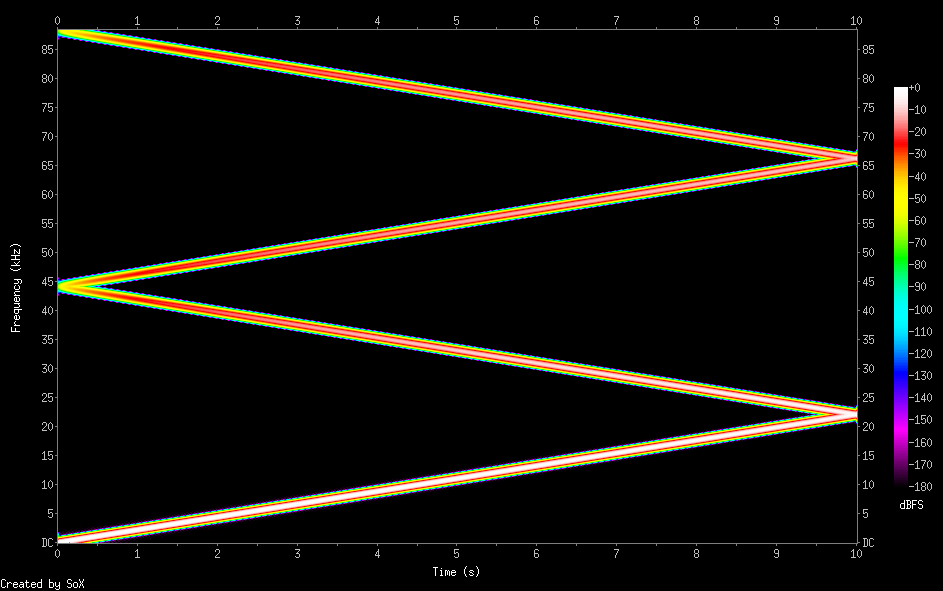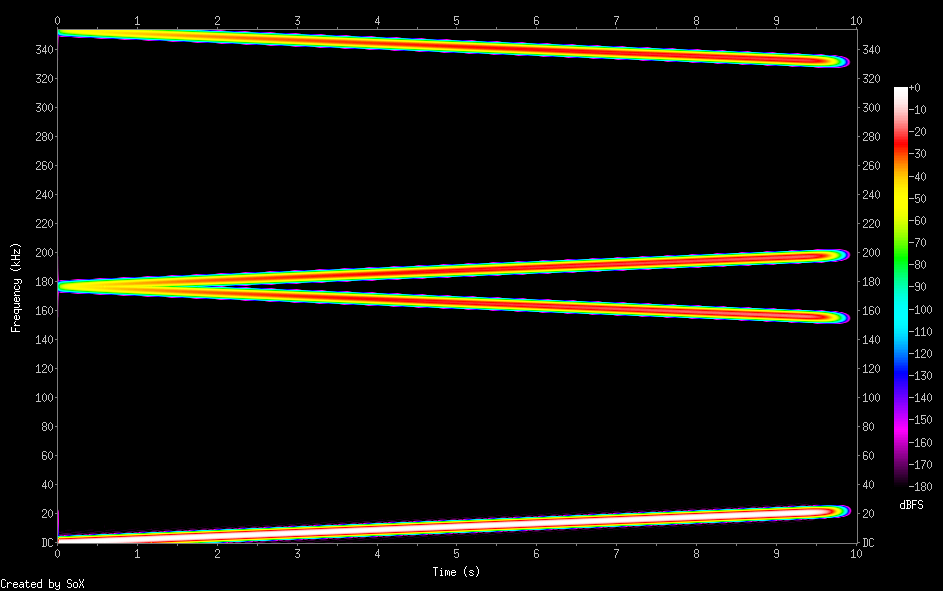Upsampling is same as oversampling, but used to emphasize DAC side process and that proper digital filters are used for it (which is not always the case for oversampling).
Oversampling itself is explained here:
Digitally sampled signal has spectrum that repeats itself at multiples of sampling rate, these are called images. Starting from band 0, every even spectrum is normal forward frequency content and every odd spectrum has inverse frequency content. To properly reconstruct analog signal, all those image bands need to be completely removed (filtered out), leaving only the 0 - base band. Without filters, 4x spectrum of 44.1k sampled 0 - 22.05 kHz sweep looks like this:
It is practically impossible to design analog reconstruction filter that would remove everyhing above 22.05 kHz and not screw up anything below 20 kHz. The needed transition band is only 2.05 kHz wide.
However, with a digital filter it is possible (this is poly-sinc-ext2 filter in HQPlayer), upsampling 4x to 176.4 kHz sampling rate:
If we then zoom out by 4x:
We can see that first image now starts at 176400 - 22050 = 154.35 kHz. Creating analog filter that will be able to remove content above 154.35 kHz and not screw up content below 20 kHz is a little bit easier. In practice it would be still far from perfect reconstruction, and that’s why we usually use much higher upsampling ratios (I just used this 4x as an example because the plots are more readable this way). But compared to first case without digital filters massively better and simpler for the analog filter.
DAC chips cost around 10€ per piece and contain a very small DSP - also because of very close proximity to sensitive analog parts. So they cut corners in many ways. In a computer you have a lot of inexpensive DSP power…


